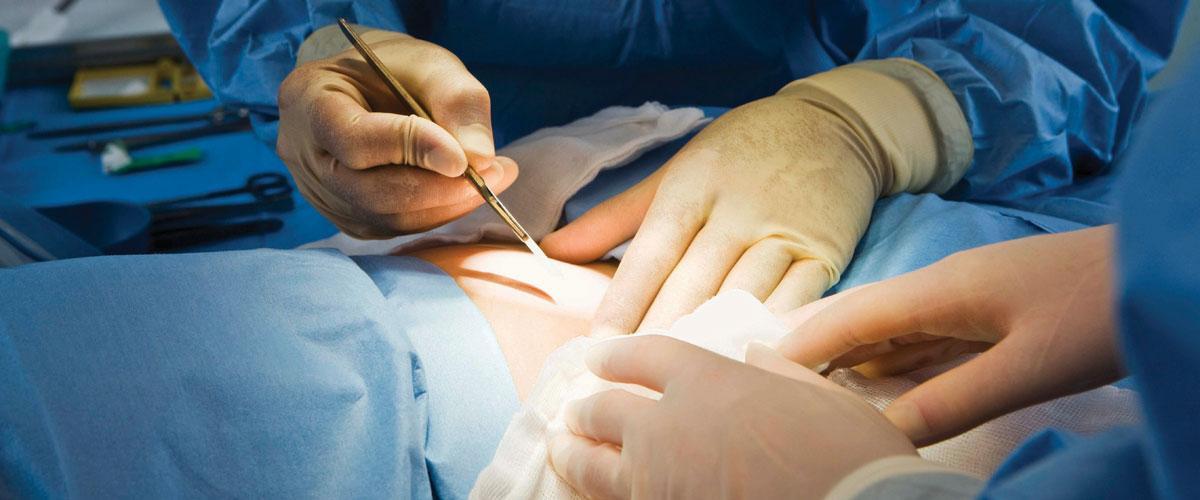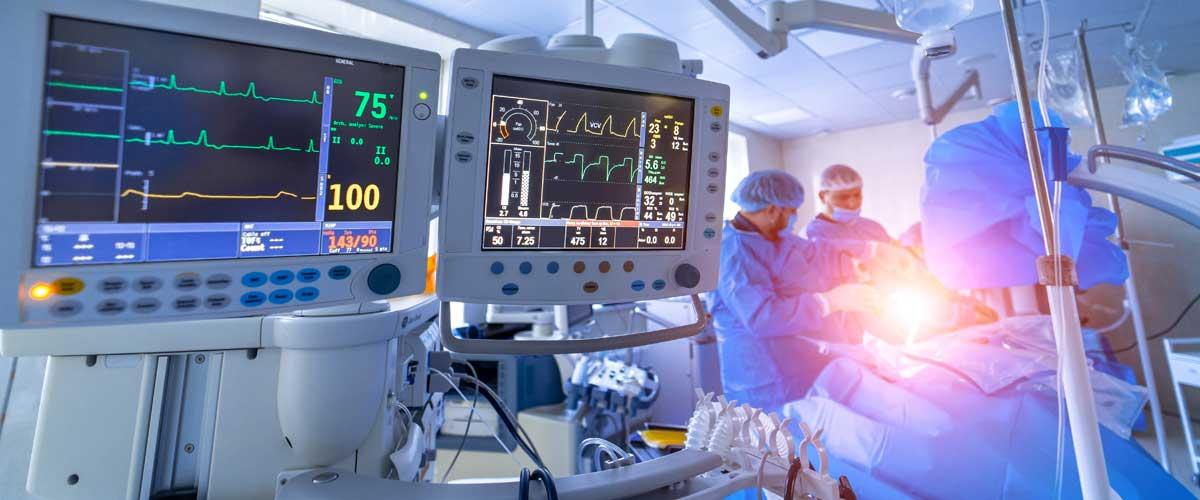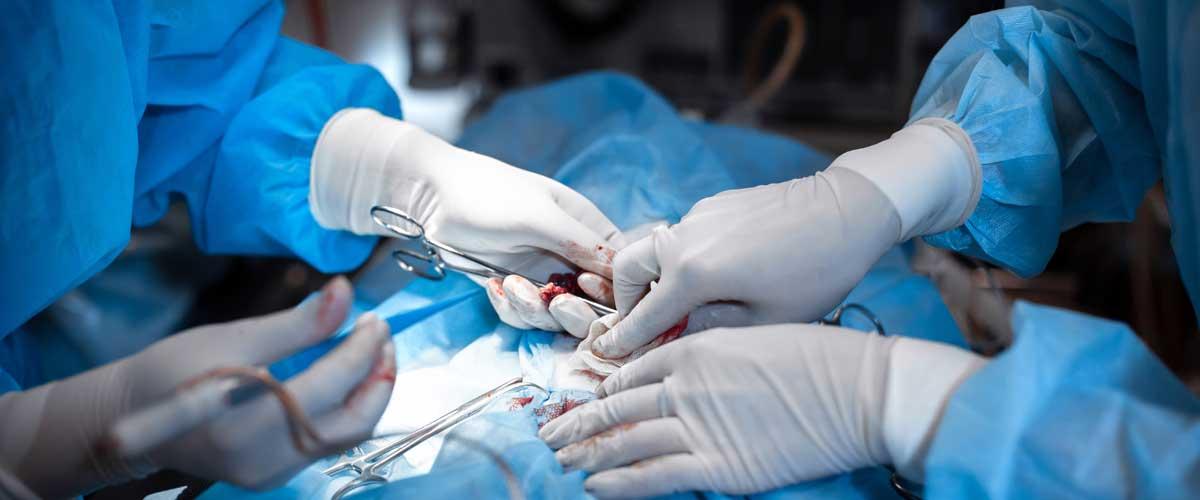Let’s start with a simple question: How common are surgical infections?
Nowadays, surgical site infections (SSIs) are one of the most frequent occurring infections that can happen both during hospitalisation and after discharge. In cholecystectomy operations, for instance, a significant increase in such infections was observed yearly from 2011 to 2014.¹ It is, therefore, crucial to know how they arise and understand associated consequences in order to plan strategies to prevent and/or treat them.
According to the National Nosocomial Infection Surveillance System (NNIS), SSIs occur within 30 days from a surgical procedure (or within a year if an implantable foreign body is left in-site). This can affect the incisional or deep tissue at the surgical site.² SSIs may fall into one of three categories, including:
- Superficial incisional SSI – Concerns skin or subcutaneous tissue of the incision
- Deep incisional SSI – Involves muscles and the tissues surrounding them
- Organ or space SSI – Can be in any area of the body other than skin, muscle and surrounding tissue being cut or manipulated during a surgery (an organ or the space between organs).³
Additionally, many of the millions of microorganisms living on the skin, in the body and within the environment (i.e. bacteria, viruses and fungi) can be catalysts for any one or all of these forms of SSIs. In fact, those organisms, which are dangerous, can cause critical infections. SSIs are, however, mainly attributable to germs such as escherichia coli, enterococcus, streptococcus, candida albicans¸ pseudomonas and staphylococcus aureus.⁴
Common consequences of SSIs
The impact of SSIs is wide ranging, including:
- The extension of the hospitalisation of patients
- An increase in care-related costs for the healthcare facility/infrastructure
- Far-reaching negative effects for the patient’s mental and physical health⁵
- Death
Several studies have been carried out across Europe, with one in Italy taking into account 4,665 patients. Amongst this sample of patients, an SSI occurred in 241 persons (5.2 per cent). High SSI incidence rates were also found in relation to colonic surgery (18.9 per cent) and gastric surgery (13.6 per cent).⁶ The extra costs due to SSIs in orthopaedic and traumatological procedures in Italy have also been analysed in a separate instance, noting an estimated average cost of €9,560 for each event. Based on this, maximum costs could reach €32,000.⁷ And in Switzerland, surgical site infections account for 31 per cent of healthcare-related infections, generating an estimated cost of 230 million francs per year.⁸
Prevention methods
Generally, using all the right instruments, improving sterilisation procedures and promoting proper disposal of used material can help sharply lower the risk of infection. Measures to be taken concern correct asepsis and correct surgical techniques.⁹
The following are amongst the procedures strongly recommended by the World Health Organization (WHO):
- Perform preoperative patient washing with chlorhexidine di/gluconate (CHG)
- Preoperatively administer antibiotic prophylaxis
- Remove patient hair only if strictly necessary; in this case, use electric clippers instead of traditional razors
- Ensure health workers routinely carry out hand disinfection;
- Adequately oxygenate patients (FIO2 at 80%)
- Irrigate incisional wounds with an aqueous povidone-iodine solution before closure.
How well does your facility perform on the WHO’s surgical site infection checklist?
Fight SSIs with Medline’s help
Medline is always by your side to help you prevent surgical infections, support you and to provide the necessary devices and consultation.
As Point 3 in the list above hints, an additional factor that could pave the way to an SSI could be the use of traditional shavers or razors to remove hairs at the surgical site. That is because, as clinicians remove hair, they could harm patients’ skin. It is, therefore, highly recommended to use clippers with disposal blades, which, if properly used, lower the risk of nicks and cuts and help improve safety.¹⁰
Moreover, regarding incisional wounds, in order to slowly release the recommended povidone-iodine solution, clinicians can use an incise film impregnated with this solution. In this way, complete sterility of the site and the safety for the patient are guaranteed. In addition, it is important to have an understanding of antibacterial activity and how to measure it, per ISO 22196:2011.


Laura Formichi
Marketing & Sales Coordinator, and QA/RA Delegate, Medline Italy
Laura has a degree in molecular biology and has been working at Medline for over a decade in marketing and quality assurance and regulatory affairs. She resides in the Chianti hills in Florence (famous for wine and oil), loves reading and enjoys communing with nature!


Roberto Marrazzo
Former Sales and Marketing Apprentice, Medline Italy
Roberto is a native of Prato (near Florence) who is keen on wines and has a passion for travelling, foreign languages and, most recently, digital marketing. His educational background is in languages (Spanish, English and Arabic), as well as intercultural studies. Learn more on LinkedIn.
Reference:
1. https://www.ecdc.europa.eu/sites/default/files/documents/AER-HCAI-SSI.pdf
2. Sands K., Vineyard G., Platt R. Surgical site infections occurring after hospital discharge. J. Infect. Dis.173 (4): 963-970, 1996.
3. Mangram A.J., Horan T.C., Pearson M.L., et al. The Hospital Infection Control Practices Advisory Committee. Guideline for prevention of surgical site infection. Infect. Control Hosp. Epidemiol. 20: 250-278, 1999.
4. https://nursing.ceconnection.com/ovidfiles/00152258-200807000-00009.pdf
5. https://reader.elsevier.com/reader/sd/pii/S0195670117301354?token=E28C95483DD5A25004157D9709F80574E9ABDBB374CA39B8B6F7A58A28278AAF87B27121581E09916F5BC03215CF07EE&originRegion=eu-west-1&originCreation=20210714144122
6. Petrosillo N, Drapeau CM, Nicastri E, Martini L,Ippolito G, Moro ML; ANIPIO. Surgical site infectionsin Italian Hospitals: a prospective multicenter study.BMC Infect Dis 2008;8:34.
7. Nobile M, Navone P, Orzella A, Colciago R, Calori GM. Developing a model for analysis the extra costs associated with surgical site infections (SSIs): an orthopaedic and traumatological study run by the Gaetano Pini Orthopaedic Institute. Antimicrobial Resistance & Infection Control. 2015;4(Suppl 1):P68
8. https://tesi.supsi.ch/2201/1/Bianchi%20Leda.pdf
9. https://www.ijph.it/pdf/2017-v6-n8.pdf
10. https://www.nurse24.it/studenti/procedure/tricotomia-paziente-chirurgico.html



